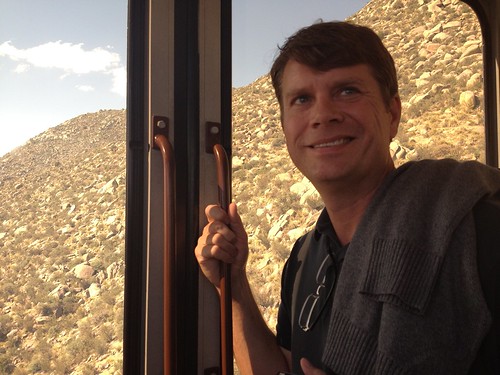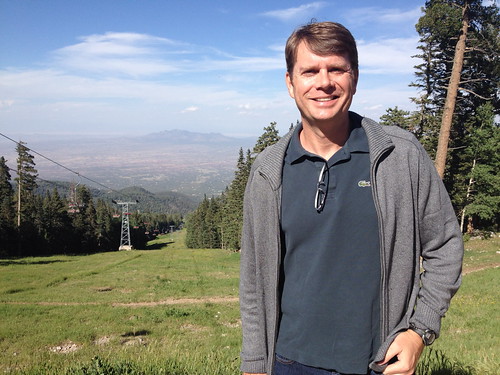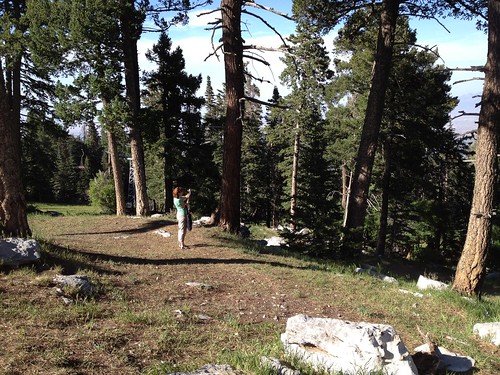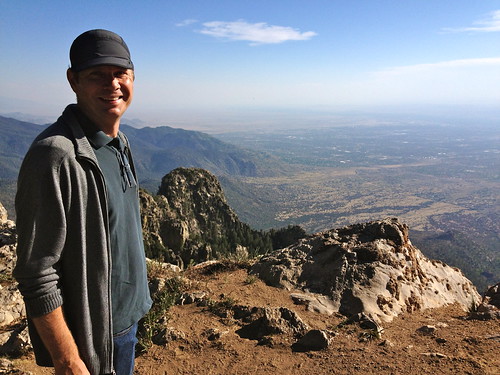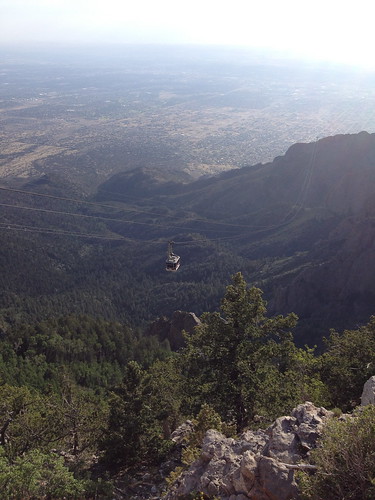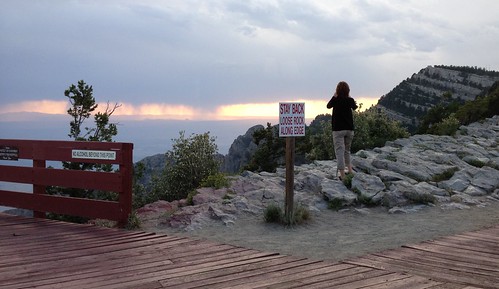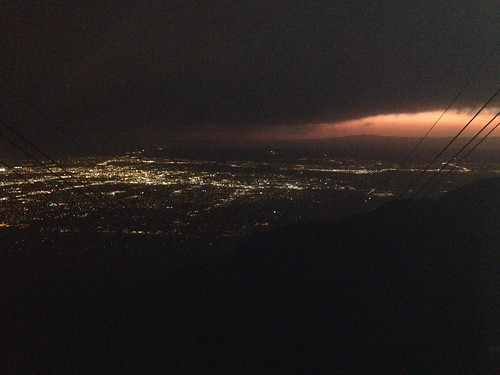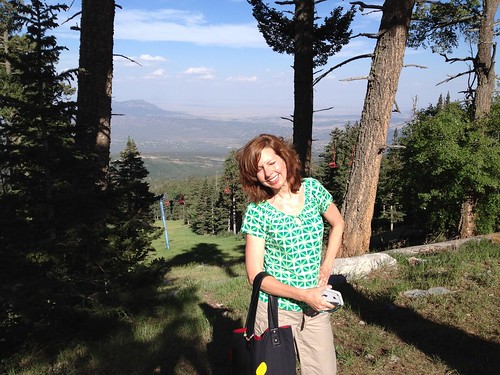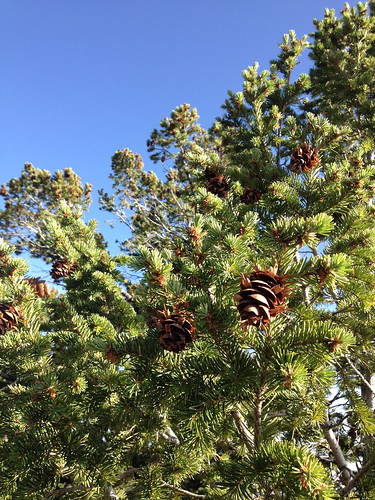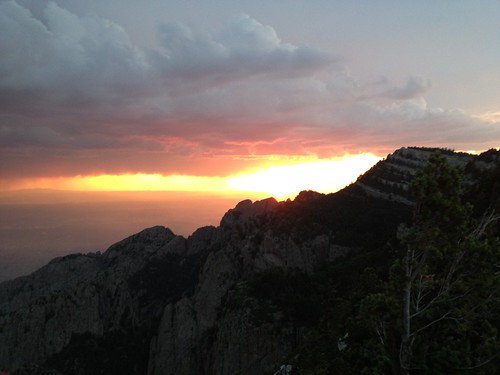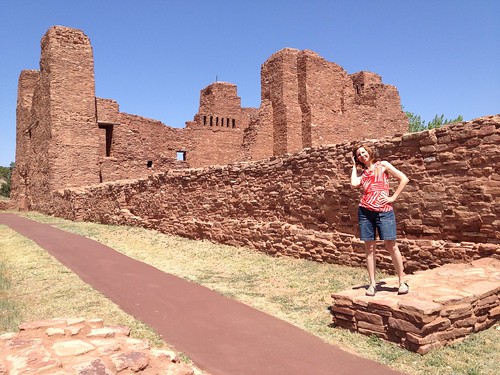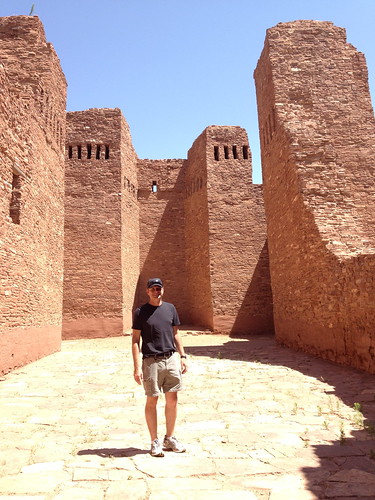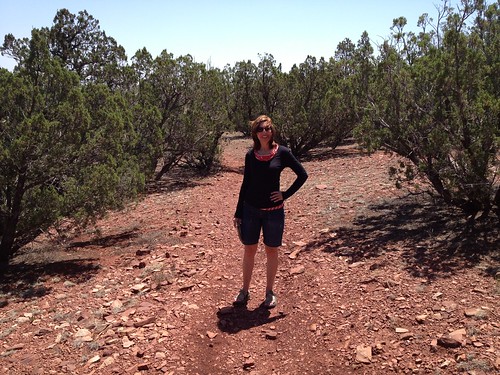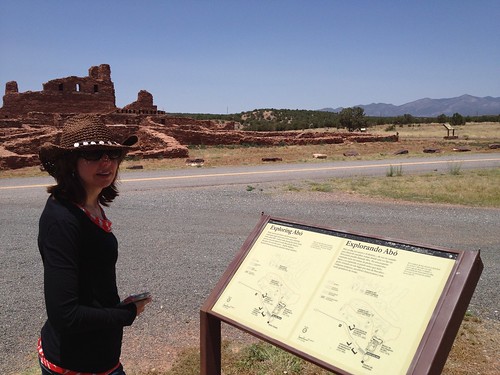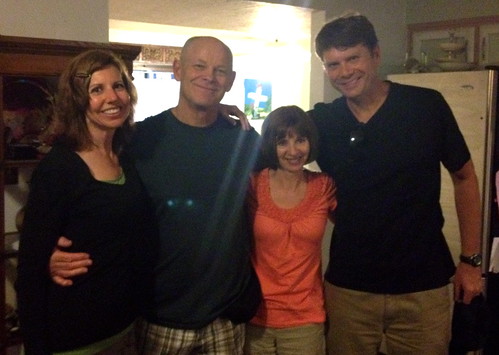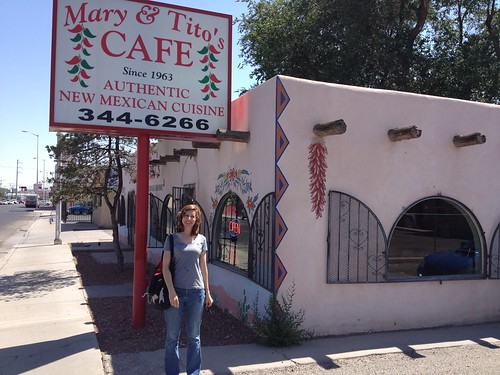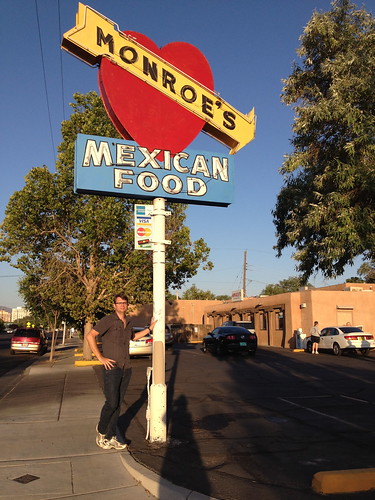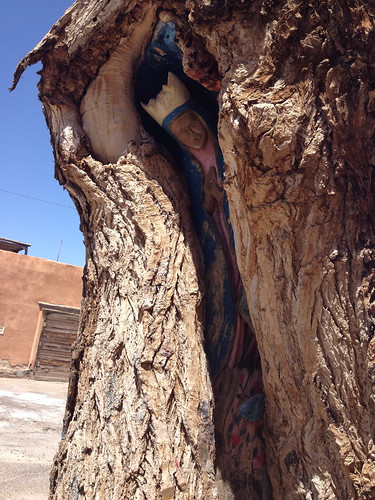Looking for something to do outside in Albuquerque? There’s no end to the options! How about a trek through a boulder-strewn canyon decorated 400-700 years ago by American Indians and Spanish settlers? Or consider strolling around the Three Sisters, a collection of volcanoes on the West Mesa. Both sites are part of the Petroglyph National Monument, a wonderful collection of trails managed by the National Park Service. Bike enthusiasts will find a 16-mile trail through the “bosque” (pronounced BOSS-key), a cottonwood forest along the Rio Grande River.
Tony and I started each day in Albuquerque with a hike or bike ride (after eating a ridiculously indulgent breakfast at our B&B, that is), and we truly loved being outdoors under that vast blue sky.
Rinconada Canyon
For our first outing, we headed to Rinconada Canyon. This description comes from the National Park Service website:
Rinconada Canyon offers an insight into the geologic, cultural, and natural resources of this region. From the parking lot a sandy path follows the northern escarpment, carrying you over sand dunes. As you walk into the canyon, the sounds and sights of the city fade away and may be replaced with the coo of a mourning dove or a collared lizard sunning itself on a basalt boulder. Here you see prehistoric and historic petroglyphs, rock wall alignments and shelters, and wildlife living in the vegetation growing throughout the canyon.
The geology of the area shows the remnants of volcanic eruptions of 200,000 years ago. The basalt from these flows caps the sandstone of the Santa Fe Formation. As the softer sandstone erodes away, the basalt breaks off and tumbles down the hillside. This action provided the escarpment where the petroglyphs were carved.
Archeologists believe most of the 1,200 petroglyphs in this canyon were pecked into the basalt boulders using a hammerstone to remove the dark color on the surface and reveal a lighter color underneath. Pueblo Indians use the images to pass on stories about history, culture and spiritual beliefs.
Checking out some petroglyphs.

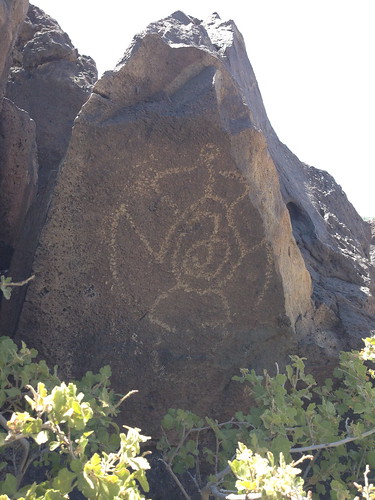
Unfortunately, some relatively modern visitors felt compelled to carve their own petroglyphs. This guy visited Rinconada Canyon on my birthday in 1919!

Some petroglyphs and rock formations hint at what life was like for the Spanish explorers and Mexicans who arrived here in 1540. We saw petroglyphs of Catholic crosses and what archeologists think could be livestock brands.
We had just started out on this trail, when a snake crossed the path. He took his sweet time, but Tony and I were too slow getting out our cameras, so we missed his face. Beautiful!
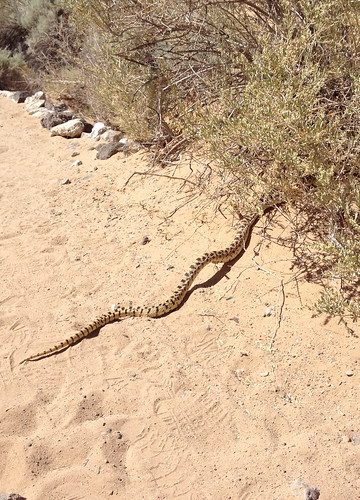
The canyon is ringed with boulders, but the center is sandy with clumps of scrubby plants and lots of scrambling lizards.

The Volcanoes
Here’s the scoop from NPS:
Known locally as the Albuquerque Volcanoes or the Three Sisters, they are a classic and rare example of a fissure eruption. In fissure eruptions magma rises along thin cracks in the Earth’s crust unlike most volcanoes in which magma rises through a vertical central vent. Here the fissure is over 5 miles (8km) long. Very long cracks like these may result in a row of aligned eruption craters—all active at the same time. Such eruptions create “curtains of fire” like those that occur today at Kilauea in Hawaii Volcanoes National Park.
According the the New Mexico Institute of Mining and Technology, all volcanoes in the state are “probably” extinct, meaning they are “unlikely” to erupt again. I guess I prefer a little more certainty about such things. Still, it was fun to walk around the volcanoes. We climbed up two of them, only to learn later that doing so was insensitive to the Pueblo Indians, who “believe the volcanoes and the petroglyphs pecked into the volcanic boulders provide a direct spiritual connection both to their ancestors and to the Spirit World, the place where time began,” according to NPS literature. Brochures urge visitors not to hike to the peaks. Dang.
Tony with the JA Volcano in the background.
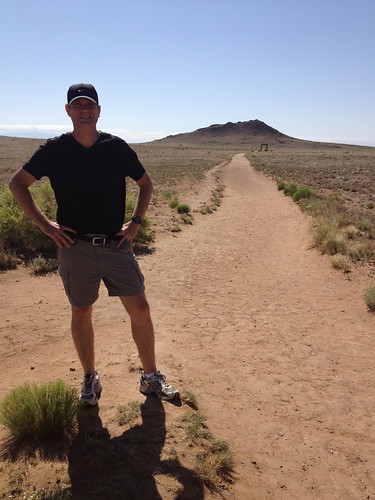
On the top, overlooking ABQ.

Too late to pretend we were culturally sensitive at the volcanoes. The big rocks are light because they’re filled with air! Tony looks so virile, eh?
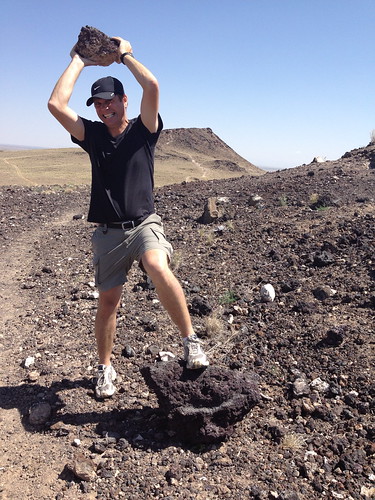
On top of the Vulcan Volcano, you can see forever.
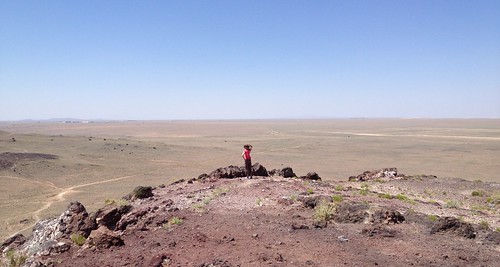
Walking back to the car. I love this landscape!

Tiny cactus flowers.
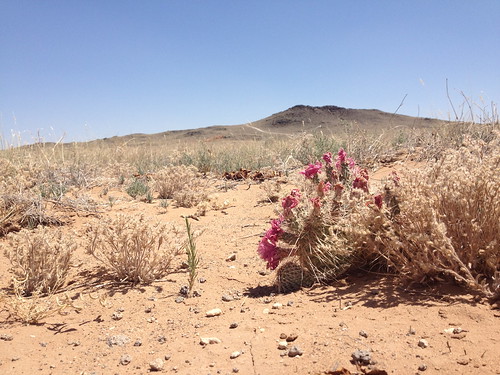
Biking the Bosque
Albuquerque’s Paseo del Bosque recently made Sunset magazine’s list of the 20 best bike paths in the West. We concur. It’s pretty fantastic.
We rented high-quality mountain bikes from Routes Rentals & Tours. The bikes were a bit small for us, but they did the trick. We picked up the trail very close to our wonderful B&B and rode north to the Alameda trail head (for a roundtrip total of about 17 miles). Paved, flat and quiet, the trail never crosses roads or encounters motorized vehicles. We saw about 20 hot-air balloons rising into the early morning sky. Stunning!

Here’s more info on the Paseo del Bosque, aka Riverside Trail. This article describes a fire that broke out while we were there, and we’ve heard they since closed the trail until the “fire season” ends.
There is WAY more to do in Albuquerque if you love being outdoors. We look forward to exploring other trails on our next visit.
